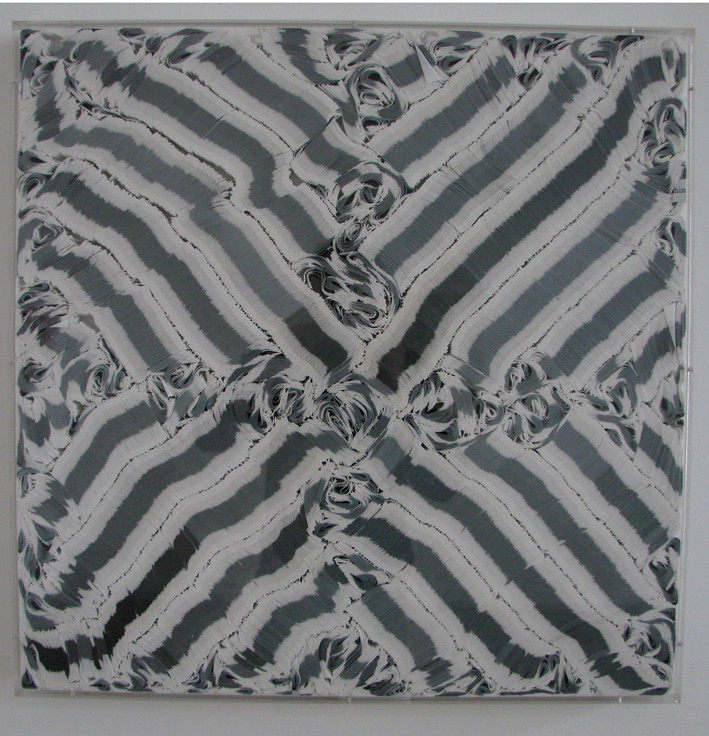Joseph Havel
19 May - 10 Jul 2012
JOSEPH HAVEL
History, Hope, Desire
19 May - 10 July 2012
History is a selective narrative constructed at the intersection of hope and desire. This is the same for a personal history such as the biography of an individual or the collective narrative written for a group with shared aspects or attributes. Each history is as notable for what it leaves out as what it includes so is inevitably a work of fiction; a manifestation of hope and desire given form.
The works by Joseph Havel in this exhibition divide into two bodies corresponding to the two rooms of the gallery. Each body responds to the idea of historical construction and selective memory in different poetically associative ways. The first room is a series of works made from castings of books that came from the artist’s own library, were inherited from his parents, or were discarded by the library at the Museum of Fine Arts Houston where Havel works as director of the school. The selection forms a version of an autobiography. The castings are either in bronze or translucent resin and their materiality translates the unavailable texts into a physical presence which is translucent or opaque; light or weighty. Each carefully crafted object contains visual details as a memory of the original transformed through process.
The second room is a survey of works which use shirt labels to construct wall assemblages. Havel refers to them as “sculptures of paintings”. They often use formal patterning based on modernist precedents by artists such as Agnes Martin and Frank Stella. This exhibition includes the first label piece “White Names” which was made in 1996 from the labels of discarded white shirts. Later assemblages use shirt labels that are custom woven using words photo copied from books in the artist’s library, most frequently “The Dream Songs” by john Berryman. The labels in these works are densely packed edgewise into Plexiglas and for the most part the text is unreadable. In places where the orderliness of the pattern breaks down a twisted label reveals the text as a single word poem compressed by 30,000 labels. Two new labels were woven for this exhibition, “Hope” and “Desire”, both in identical pale blue.
History, Hope, Desire
19 May - 10 July 2012
History is a selective narrative constructed at the intersection of hope and desire. This is the same for a personal history such as the biography of an individual or the collective narrative written for a group with shared aspects or attributes. Each history is as notable for what it leaves out as what it includes so is inevitably a work of fiction; a manifestation of hope and desire given form.
The works by Joseph Havel in this exhibition divide into two bodies corresponding to the two rooms of the gallery. Each body responds to the idea of historical construction and selective memory in different poetically associative ways. The first room is a series of works made from castings of books that came from the artist’s own library, were inherited from his parents, or were discarded by the library at the Museum of Fine Arts Houston where Havel works as director of the school. The selection forms a version of an autobiography. The castings are either in bronze or translucent resin and their materiality translates the unavailable texts into a physical presence which is translucent or opaque; light or weighty. Each carefully crafted object contains visual details as a memory of the original transformed through process.
The second room is a survey of works which use shirt labels to construct wall assemblages. Havel refers to them as “sculptures of paintings”. They often use formal patterning based on modernist precedents by artists such as Agnes Martin and Frank Stella. This exhibition includes the first label piece “White Names” which was made in 1996 from the labels of discarded white shirts. Later assemblages use shirt labels that are custom woven using words photo copied from books in the artist’s library, most frequently “The Dream Songs” by john Berryman. The labels in these works are densely packed edgewise into Plexiglas and for the most part the text is unreadable. In places where the orderliness of the pattern breaks down a twisted label reveals the text as a single word poem compressed by 30,000 labels. Two new labels were woven for this exhibition, “Hope” and “Desire”, both in identical pale blue.

